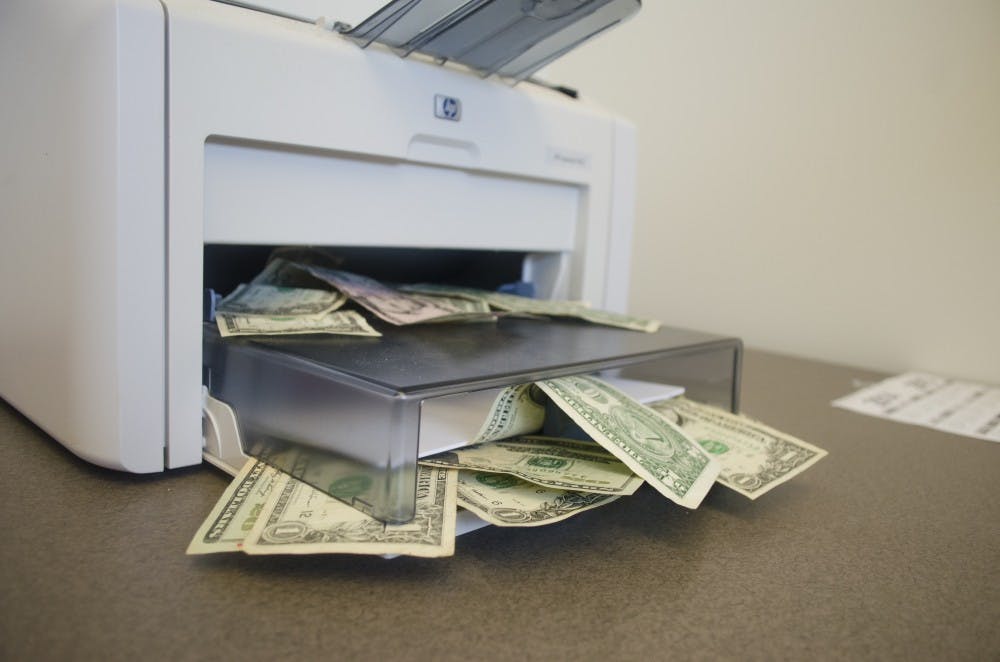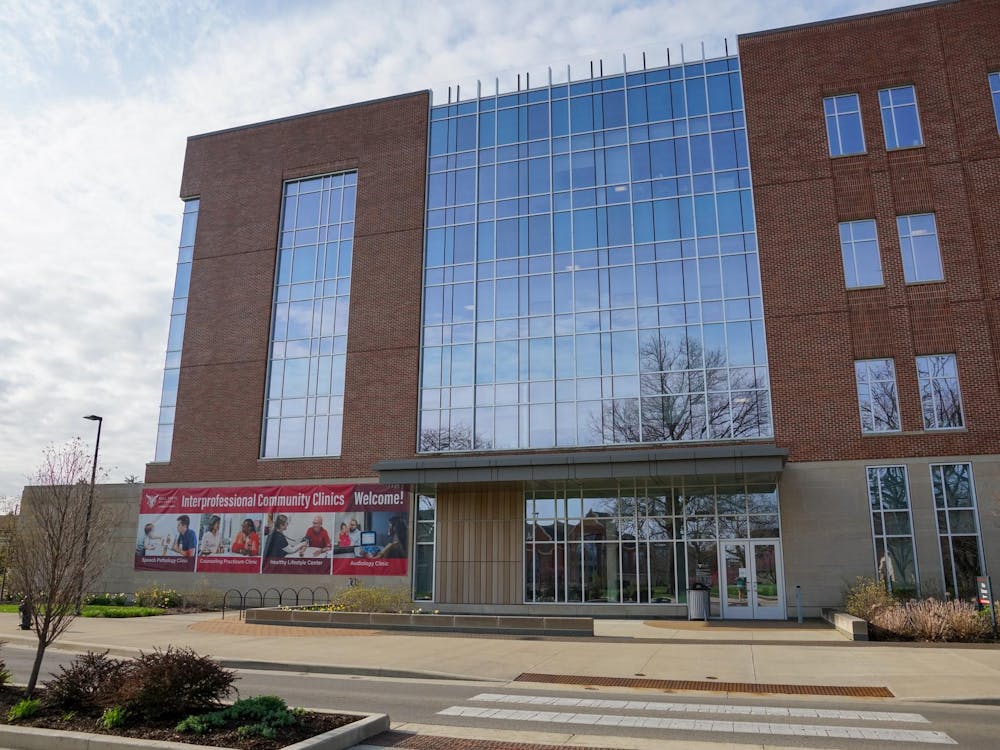Faculty and staff have been scrutinizing the university’s new centralized printing system, which aims to reduce cost and increase efficiency.
Under the Managed Print Services program, the university would buy all printers through one company: Ricoh.
Bernie Hannon, associate vice president of business affairs, said the switch could save the university $800,000 to $1 million a year.
This would be helpful, because Ball State received about $15 million less after the state reduced funds to public universities in 2010.
Previously, departments bought their own printers, paper and ink cartridges. One by one, each department is having Ricoh assess their printing needs, and then the university is buying the necessary printers.
This eliminates the small printers scattered across campus, which Hannon said are inefficient and not cost-effective.
Faculty and staff are still not allowed to personally buy printers and keep them in their office. This hasn’t changed from the previous policy.
The university prints 37.5 million pieces of paper per year and has eight times more print devices than the standard for a university this size, according to Print Optimization Group, a company that analyzes print usages and makes assessments.
The university hired the company as a consultant and set up committees to help create the policy. Hannon said there were people from across campus represented on those committees.
However, some faculty feel the policy has not been communicated or implemented clearly.
Hannon said the policy has been in the works since early 2011. But Roger Lavery, dean of the college of Communications, Information, and Media, said it was not discussed until this summer.
“I cautioned certain people and I said, when the faculty get back, there’s going to be discussions in the departments and this isn’t going to go well,” Lavery said. “This hasn’t been discussed, various solutions haven’t been worked out.”
The Business Affairs office was one of the first to switch. Hannon said so far about 30 percent of the departments have implemented the new policy.
One main source of confusion was a three-cent charge per impression. Some faculty were not warned before it was implemented and therefore did not know when or why they were being charged.
The charge was set to refund the university money that is used to by the new printers. The idea was that instead of paying for the machine, the department is only responsible for that three-cent charge.
Tony Proudfoot, a university spokesperson, said an email was sent to the entire campus to help them understand that the situation is being addressed. He said there is no end time set for the transition.
After all the confusion, the university paused the per-print and service charges at the end of October, Hannon said.
“We need a little more time to figure out the best way and the most equitable way to pay for these machines and refund the central fund and make sure we can continue to buy printers in the future,” Hannon said.
In one email from Michael Holmes, chairperson of the journalism department, in July, he said, “Ricoh may become less popular than Parking Services and UMC.”
In another email from Holmes dated July 17, he said it was the first time he had seen the policy.
Douglas Naffziger, an associate professor of management in the Miller College of Business, said in an email in February, “It all adds up to a large inconvenience and waste of valuable faculty time and it seems once again like a policy that was developed with little or no input from those affected by the people affected.”
However, Mahesh Daas, chairperson of the department of architecture, said he did have an opportunity to give his feedback on the policy when it was being developed. He said they should be asking how printing is helping faculty and staff improve education.
John Jacobson, dean of the Teachers College, said they just independently bought the same printer Ricoh is using. Even though they bought the printer with their own funds, they were still getting charged for the per-impression fee.
“All the sudden we were being charged as if the university was buying the machine and paying for it,” Jacobson said. “It’s a situation like that they have to work out. ... if we’ve already purchased the machine and they’re charging us the same price, it’s not right.”
Lavery said he has a 3-year-old Toshiba color copier that the department paid $12,000 for.
“Of course we don’t want to give it up, but at some point, they’re going to come in and replace it,” he said. “So you can understand, I’m sitting here going, I don’t want to pay six cents for two sides a page when it doesn’t cost me that now.”
He said in theory, not having to pay $12,000 for a new printer and just getting charged per page sounds good.
“But I’m looking at, I’ve got a copier that could go six or seven years without any charges,” Lavery said.
Lavery said the CCIM budget hasn’t been changed in 14 years.
“Right now, we’re stretched on our account pool money, so for each department the thought of having to come up with six or eight or ten thousand dollars is really difficult,” he said.
Despite the complaints, Lavery is optimistic that the university will fix the problems with the policy. He said he wasn’t opposed to the notion of networking.
“Right now, I credit our president, who has pulled back and said, ‘You know what, let's look at this, let’s see what’s going on and then we’ll go forward,’” Lavery said. “So I’m optimistic now that there will be a little more flexibility and more room to negotiate and maneuver.”
Hannon said as they install more printers, they start to understand more of what is happening.
“That’s why we needed this print management policy, because we didn’t know what we printed,” he said. “… So we hope that people will now have the ability to say, 'You know what, last year we printed half a million pieces of paper, this year we’re going to try to print less than that.'”





